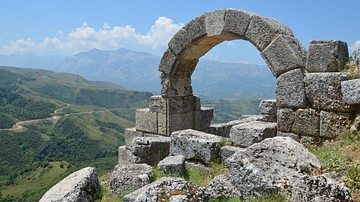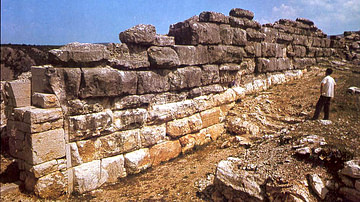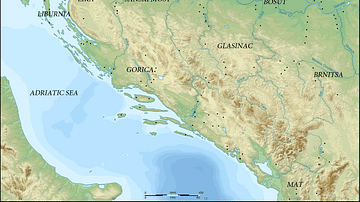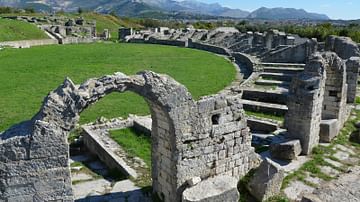Search
Did you mean: Lycia?
Summary 
Loading AI-generated summary based on World History Encyclopedia articles ...
Search Results

Article
Illyria - Exploring Ancient Albania
Albania is located at the crossroads of the eastern Adriatic and was known as Illyria and Epirus throughout the Classical era. It played a strategic role in ancient times and was a point of contact between Illyrian, Greek, and Roman civilizations...

Image
Daorson Ruins, Ancient Illyria
The ruins of Daorson, ancient Illyria (modern Bosnia). The region was inhabited by the Daorsi tribe who flourished in the region c. 300-50 BCE. They fell under the control of Queen Teuta (r. 231-227 BCE) and were most likely involved in Illyrian...

Image
Map of Prehistoric Illyria
A map showing the sites and cultures of prehistoric Illyria.

Image
Queen Teuta of Illyria
Artist's impression of Teuta, Queen of the Illyrian Ardiaei tribe, leads a pirate expedition against rome. According to Illyrian laws, piracy was a legitimate trade, which led to war against the Roman Republic, who did not approve. This...

Definition
Pirates in the Ancient Mediterranean
Piracy, defined as the act of attacking and robbing a ship or port by sea, had a long history in the ancient Mediterranean stretching from the time of the Egyptian pharaoh Akhenaten (r. 1353-1336 BCE) and throughout the Middle Ages (c. 476-1500...

Definition
Twelfth Night - Shakespeare's Most Festive Play
Twelfth Night, or What You Will is a romantic comedy by William Shakespeare (l. c. 1564-1616), written between 1600 and 1601 and first performed on 2 February 1602. As suggested by the title's allusion to Twelfth Night – the night before...

Definition
Herakleia Lynkestis
Herakleia Lynkestis (Heraclea Lyncestis; Ἡράκλεια Λυγκηστίς) was a city in the ancient kingdom of Macedon not far from modern Bitola, founded c. 358 BCE by Philip II of Macedon (r. 359-336 BCE) as a governing centre for his new expansions...

Definition
Perdiccas
Perdiccas (d. 321 BCE) was one of Alexander the Great's commanders, and after his death, custodian of the treasury, regent over Philip III and Alexander IV, and commander of the royal army. When Alexander the Great crossed the Hellespont...

Definition
Salona
Salona was an ancient city located at the estuary of the river Jadro in present-day Solin, a suburb of Split on the Adriatic coast of Croatia. It became the capital of the Roman province of Dalmatia in 9 CE. Before the Romans Salona was...

Definition
Robert Guiscard
Robert Guiscard (1015-1085) was a Norman knight best known for conquering much of Southern Italy and Sicily during the 11th century. His many exploits include the expulsion of the Byzantines from Italy, support of a reformist papacy, and...